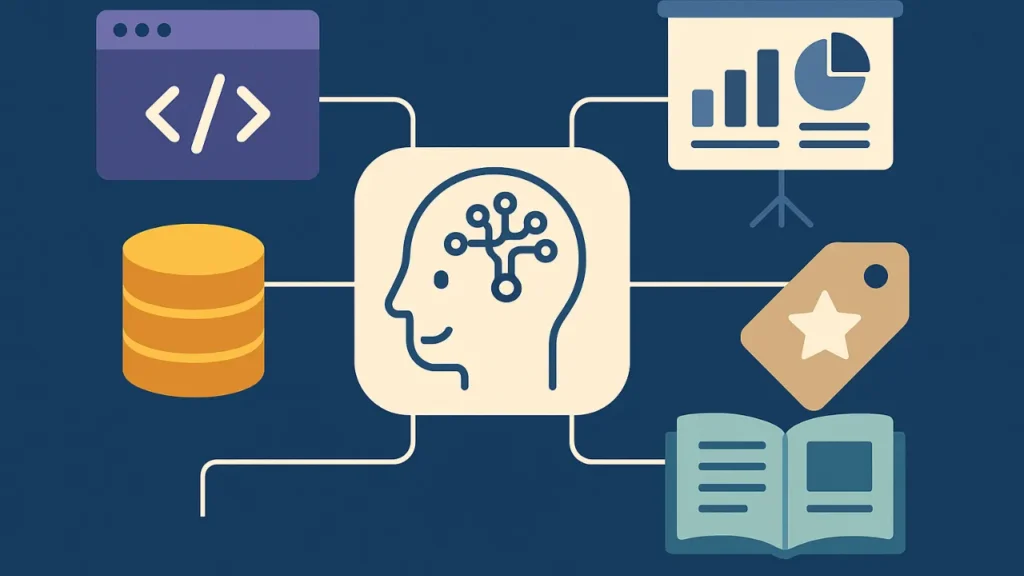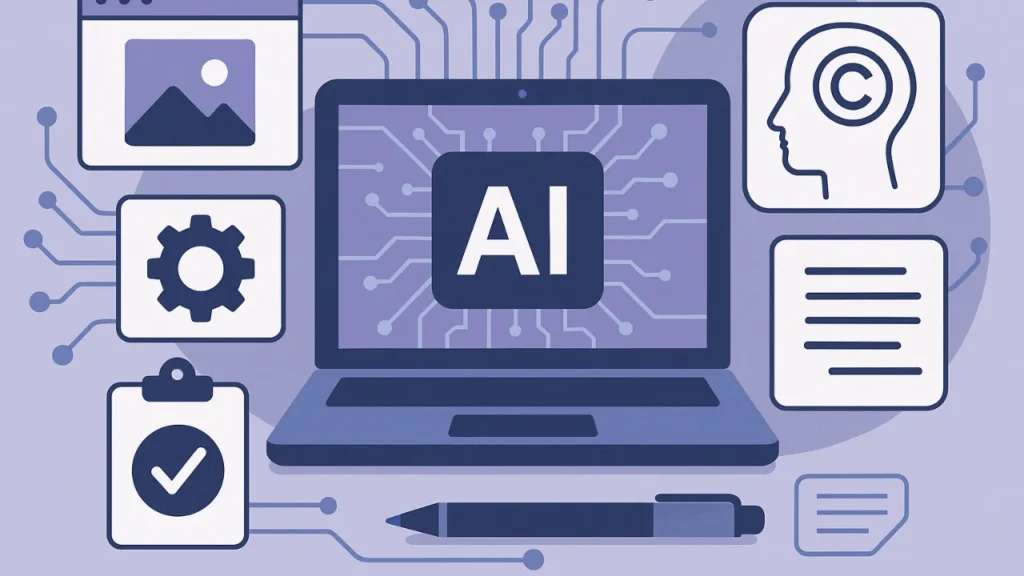In today’s fast-moving digital economy, a brand’s most valuable assets are often intangible — its name, logo, creative content, and reputation. As companies grow and compete in global markets, protecting these assets through intellectual property (IP) management becomes essential.
But with thousands of digital touchpoints, emerging technologies, and global legal complexities, manual management is no longer enough. In 2025, AI is revolutionizing how brands protect, monitor, and optimize their assets.
From automating copyright checks and managing trademarks to analyzing brand mentions and enforcing rights, AI tools are enabling smarter, faster, and more accurate brand management than ever before.
This blog explores the top AI tools for managing brand assets and intellectual property in 2025, highlighting how they streamline workflows, reduce compliance risks, and increase brand value.
To avoid AI detection, use Undetectable AI. It can do it in a single click.
Table of Contents
Understanding Brand Assets and Intellectual Property

Intellectual property (IP) rights like patents, copyrights, and trademarks can be used to legally protect a company’s intangible assets (brand assets), such as its name, logo, and reputation.
Intellectual property is the legal structure that grants the owner exclusive rights for monetary gain and protects works of art, inventions, and brand aspects. Identifying and safeguarding these assets is a calculated business decision that increases brand value, generates market exclusivity, and draws in investors.
Examples of intellectual property (IP) are:
Trademarks: Preserve names, logos, slogans, and other distinguishing signs that set products and services apart.
Copyrights: Preserve original works of music, art, and literature.
Patents: Inventions are protected by patents.
Trade secrets: Preserve private company data, including proprietary algorithms.
Core Components and Libraries Behind AI-Powered Brand Management

Natural language processing, machine learning, and predictive analytics are essential elements of AI-powered brand management, which is bolstered by libraries for tasks like content production, automation, and compliance.
Together, these elements offer dynamic content optimization, real-time compliance checks, and automated asset generation.
Core components are:
- Natural language processing (NLP)
- Machine learning (ML)
- Predictive analytics
- Data analysis and big data
Core supporting libraries and technologies are:
Content creation and optimization: Libraries like Grammarly, Copy.ai, and Jasper help create excellent, consistent text for blogs, social media, and advertising copy.
Automation: Efficiency requires the use of tools for automating processes like as asset tagging, social media scheduling, and AI-powered chatbots for customer service.
Compliance and governance: By comparing assets to brand guidelines, detecting copyright issues, and guaranteeing adherence to standards across many platforms, AI helps maintain brand consistency and compliance.
Market research and insights: Artificial intelligence is used by platforms such as Brandwatch and Crayon to identify trends, keep tabs on brand mentions, and evaluate competitor strategies in real time.
Personalization engines: Recommendation engines, such as Netflix’s, are powered by algorithms that examine user data to provide users with recommendations and tailored content.
Top AI Tools for Managing Brand Assets and Intellectual Property in 2025

Best AI Tool for Managing Brand Assets: Frontify
Businesses searching for an AI-enabled brand hub might consider Frontify. It combines AI brand governance, customizable templates, brand guidelines, and DAM into a single, cohesive platform.
While marketing automation tools stress content creation and improved DAM platforms concentrate on storage, Frontify places a strong emphasis on brand governance, empowering and facilitating brand adoption and compliance throughout the company.
The AI-powered Brand Assistant from Frontify can immediately retrieve authorized assets, enforce rules, and respond to inquiries about the brand. In three crucial areas, it generates quantifiable returns on investment:
- Time savings
- Reduced compliance risks
- Driving and scaling brand adoption
Every day, brand teams frequently deal with hundreds of minor requests for assistance connected to the brand, ranging from locating the appropriate logo file to checking copy against brand voice standards. Instead, Brand Assistant takes care of those little, frequent questions.
By answering their queries in a conversational manner and in their mother tongue, it also aids users in navigating and comprehending your brand rules, DAM, and templates.
The Frontify platform also expands with your brand, allowing you to build up several portals for multilingual branding and manage many brands or sub-brands within the platform. During critical times for enterprise brands, such rebranding and brand rollouts, Frontify’s platform is also a useful tool and resource.
Best AI Tool(s) for Managing Intellectual Property
Below are detailed summaries of the best intellectual property management tools.
PatentRenewal
The objective of the IP management platform PatentRenewal.com is to make the patent renewal procedure easier for companies of all kinds. It provides a centralized approach to manage renewals in several jurisdictions, guaranteeing both cost effectiveness and compliance.
The platform distinguishes itself by providing tools that make international patent renewals easier and concentrating on worldwide renewals. You won’t ever miss a deadline due to its automated reminders, which is essential for preserving patent protection.
The cost estimation tool aids in efficient budget planning. In keeping with its USP of worldwide renewal management, PatentRenewal.com also offers an open overview of renewal procedures.
Wellspring
Wellspring is a software platform designed to assist companies in managing their licensing, innovation, and intellectual property operations. It assists groups in charge of contract commitments, patents, and the commercialization of emerging technology.
With a single system, Wellspring assists your company in managing and monitoring patents, licensing agreements, and R&D results. Its licensing module makes it simple to manage terms across several agreements, and its patent management capabilities help you stay on top of filings and renewals.
You may evaluate your IP’s market potential and track its performance over time. It is designed for groups who operate at the nexus of corporate strategy, legal, and innovation.
FADEL
Software for managing intellectual property rights, FADEL was created for sectors that deal with licensing and rights administration. It assists companies in efficiently managing and making money off of their intellectual property assets, serving industries including publishing, media, and entertainment.
FADEL is a useful tool for sectors where licensing is crucial because of its emphasis on IP rights management. In order to maintain compliance and optimize income, the software monitors and controls contracts, royalties, and rights.
You may make well-informed decisions by using its analytics, which offer insights into asset performance. In accordance with its USP of rights management, Fadel’s contract management tools expedite the negotiating process.
Rightsline
For the publishing and entertainment sectors, Rightsline is a media rights management tool. It facilitates effective management of licensing, royalties, and intellectual property rights for businesses.
Through the provision of tools tailored to the particular requirements of the entertainment industry, Rightsline shines in media rights management. Contracts may be easily tracked and managed with its licensing management tools.
Payments are made on time and accurately due to the software’s royalties tracking. Ideal for media organizations, Rightsline’s extensive rights management features assist you in keeping control of your intellectual property.
AppColl
AppColl is a cloud-based program designed specifically for legal departments to manage intellectual property. It helps you effectively handle applications, deadlines, and client communications and specializes in maintaining patent portfolios.
AppColl offers extensive patent portfolio tracking features. Its docketing system keeps your activities running smoothly by guaranteeing that you never miss a deadline. You can learn more about the state of your patent portfolio with the software’s reporting functions.
In keeping with its emphasis on patent monitoring, AppColl’s client management capabilities also facilitate simple communication and document sharing.
Future Trends in AI for Brand and IP Management

Automated processes like patent searches and infringement monitoring, improved strategic insights from advanced analytics, and the incorporation of AI with blockchain technology for licensing and enforcement are some of the next developments in AI for brand and IP management.
AI will also help with legal procedures including contract analysis and evidence collection, as well as cross-border IP management. The focus will change to human-AI collaboration, where professionals may concentrate on strategic thinking and decision-making while AI manages data-intensive activities.
Key AI trends include:
Advanced automation: AI will greatly simplify portfolio management by automating more and more repetitive processes like competitor tracking, patent searches, and infringement monitoring.
Strategic analytics and insights: Beyond automation, AI-driven analytics will identify licensing opportunities, forecast renewal risks, and identify infringement issues early.
Smarter licensing and monetization: With capabilities like automatic compliance checks and real-time monitoring of licensed IP usage, AI will enable more complex IP licensing.
AI-powered legal support: AI may evaluate case histories in litigation to predict possible outcomes, calculate damages, and assist legal teams in improving their tactics by using information from comparable prior cases.
Human-AI collaboration: Instead than replacing human specialists, AI will usher in a new era of teamwork.
Improved enforcement: Digital content assets will be better protected with the application of AI tools, which will enable more advanced and real-time enforcement against online infringement and piracy.
Integration with new technologies: In order to develop safe, automated smart contracts for licensing and other IP agreements, AI will combine with cutting-edge technology like blockchain.
Navigating AI-related IP challenges: As more content is produced by AI, more attention will be paid to managing and protecting AI-generated intellectual property (IP) and modifying legal frameworks to handle emerging ownership and copyright concerns.
Benefits of Using AI Tools for Managing Brand Assets and Intellectual Property

By improving productivity through automation, improving search and monitoring accuracy, and offering strategic insights for portfolio optimization and monetization, artificial intelligence (AI) tools are advantageous for managing brand assets and intellectual property.
These tools can reduce expenses and free up teams to concentrate on high-value work by automating processes like asset tagging, detecting possible violations, analyzing large datasets for market trends, and streamlining workflows.
AI tools for managing brand assets and intellectual property increase efficiency and accuracy by automating repetitive tasks, improving search and monitoring, and streamlining workflows.
AI tools for managing brand assets and intellectual property provide strategic insights and optimization by analyzing large datasets, improving licensing and monetization, optimizing IP portfolios, and informing data-driven decisions.
AI tools for managing brand assets and intellectual property improve brand protection and compliance by tracking and identifying infringements, ensuring compliance, and identifying rebranding opportunities.
Conclusion: AI Tools for Managing Brand Assets and Intellectual Property
AI has become indispensable for managing brand assets and intellectual property (IP). AI empowers brands to protect, monitor, and enhance their value like never before. The future of brand and IP management is driven by automation, analytics, and integration.
AI-powered systems are streamlining patent renewals, rights management, and brand governance while enhancing compliance and detection of infringement. As machine learning models grow smarter, they will increasingly provide predictive insights—identifying potential IP risks, spotting licensing opportunities, and flagging violations in real time.
Moreover, the integration of AI with blockchain is redefining transparency and trust in licensing and contract management, paving the way for secure, automated smart contracts.
Platforms like Frontify, FADEL, PatentRenewal, and Wellspring not only reduce human error and operational costs but also ensure brand consistency, accelerate decision-making, and safeguard valuable assets across markets.
AI isn’t just managing brand and IP—it’s shaping their future. Companies that invest in intelligent automation today will be the ones defining brand trust, protection, and profitability in the years to come.
FAQs: AI Tools for Managing Brand Assets and Intellectual Property
How to use AI for managing trademarks and copyrights in 2025?
By improving productivity through automation, improving search and monitoring accuracy, and offering strategic insights for portfolio optimization and monetization, artificial intelligence (AI) tools are advantageous for managing brand assets and intellectual property.
These tools can reduce expenses and free up teams to concentrate on high-value work by automating processes like asset tagging, detecting possible violations, analyzing large datasets for market trends, and streamlining workflows.
How AI helps companies manage brand assets and IP portfolios 2025?
By automating processes like patent searches and brand monitoring, optimizing portfolios for efficiency and value, and offering data-driven insights for strategic decision-making, artificial intelligence (AI) will assist businesses in managing their intellectual property (IP) and brand assets in 2025.
Read Also:
Top AI Patent Management Tools for Law Firms in 2025
How AI SEO Tools Scale Agile Solutions in 2025?


